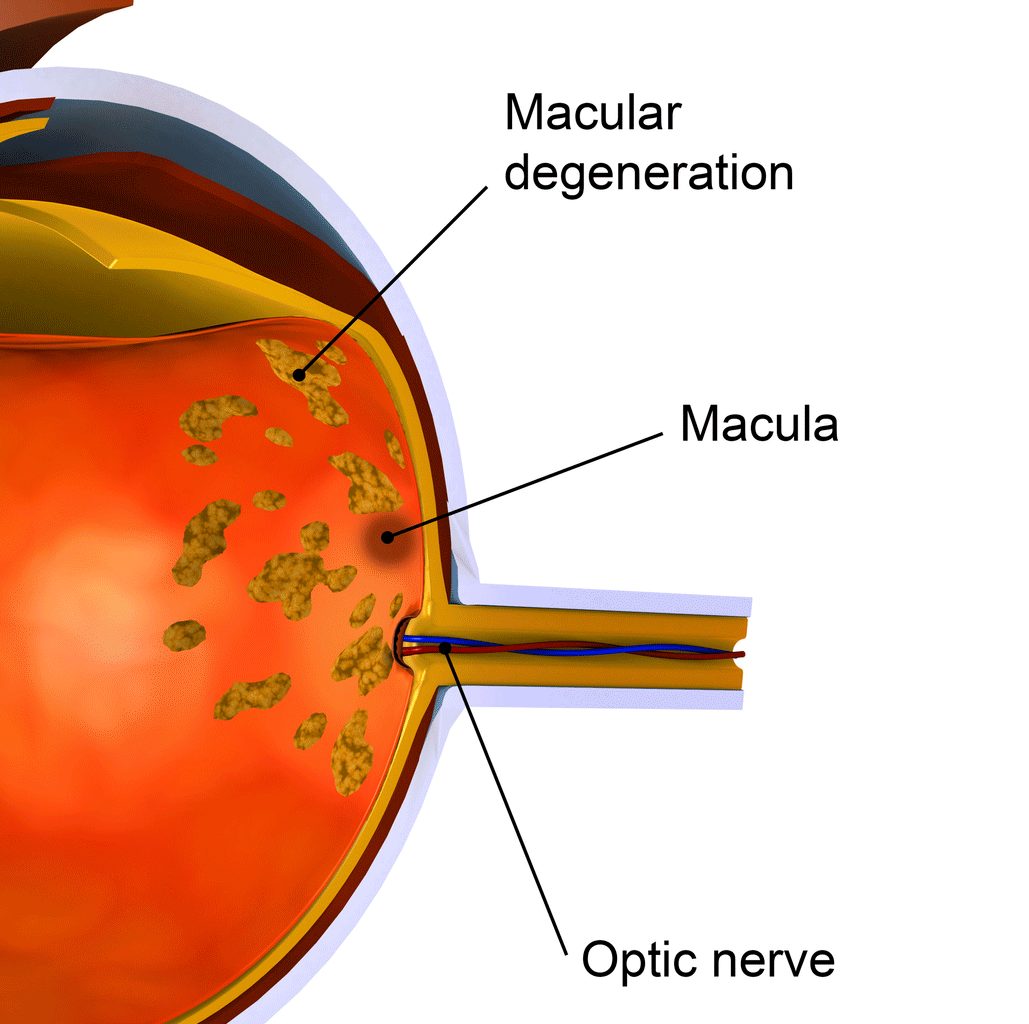Diet Can Protect You from Macular Degeneration

Some foods — such as fatty fish, walnuts, and leafy greens — are great for your eyesight as you age. Here’s how they protect you against macular degeneration.
As you age, your eyesight may decline. The two big risks are cataracts and a condition called age-related macular degeneration (AMD), which can be subtle. Most AMD cases are “dry” and never lead to serious vision loss.
From 14 to 20 percent of dry AMD cases, however, progress to the “wet” form, when abnormal blood vessels leak fluid into the retina. Once that happens, if you don’t get treatment, you may develop a large dark area in your central vision and ultimately become blind.
YOU MIGHT ALSO LIKE: What Is Macular Degeneration?
A few times a week, you can do a quick test yourself using an Amsler grid you might tape up near the toilet or phone. Cupping your hand over one eye, examine the grid with the other. Do any of the lines in the grid appear wavy, blurred, or distorted? Are there any holes or dark areas in the grid? If the answer is “Yes” to either question, speak to your eye doctor.
Do all the boxes in the grid look square and the same size? Can you see all corners and sides of the grid while keeping your eye on a central dot? If the answer is “No,” then you also need to see a doctor.
Consider having an eye exam every year or two after age 65. But be forewarned: Exams don’t always catch the problem early. In a study of 650 patients age 60 or older (the average age was 69), researchers found that 25 percent had dry AMD that wasn’t caught during a dilated eye exam. Of those, 30 percent had large drusen, yellowish deposits of debris under the retina that would have led a doctor to prescribe nutritional supplements.
To catch the problem, the researchers used a technique called color fundus imaging.
Nutrition counts
You can get ahead of any problems with good nutrition. Ocean fish like salmon and tuna are beneficial. In a meta-analysis of 11 studies covering more than 167,500 people with multi-year follow-ups, researchers concluded that, for every gram a day people ate of two omega-3 essential fatty acids, their risk of an early form of AMD dropped by around half.
How can you get omega-3s? The best food sources are:
- Mackerel
- Salmon
- Herring
- Oysters
- Sardines
- Seeds (flax, chia, and hemp)
- Walnuts
- Soybeans
You’ll see the seeds offered as an add-on in city juice outlets or added to cereals.
The American Academy of Ophthalmology also recommends eating foods high in:
- Vitamin C (oranges, grapefruit, kiwifruit, strawberries, tomatoes, red and green peppers, and broccoli), vitamin E (almonds, sunflower seeds, olive oil, and avocados)
- Zinc (beans and lentils, seeds, meat, seafood, dairy, and eggs)
- Lutein and zeaxanthin (kale, broccoli, asparagus, and colorful fruit)
Vitamins for dry AMD
As the American Optometric Association reports, two large clinical trials concluded that a combination of supplements, available in pharmacies, can slow progression of the disease.
The formula includes:
- Vitamin C (ascorbic acid) 500 mg
- Vitamin E 400 international units (IU)
- Lutein 10 mg
- Zeaxanthin 2 mg
- Zinc (as zinc oxide) 80 mg
- Copper (as cupric oxide) 2 mg
But talk to your doctor about how those supplements might interact with other medications you may be using.
What can you do to prevent dry AMD from getting worse?
High blood pressure and obesity are the two main risk factors that you can try to control.
Quit smoking. Get low-intensity exercise at least an hour a day, preferably outside. Eat omega-3 foods. Doing so can slow the progression of the condition, studies suggest.
Your eye doctor can use an optical coherence tomography scan to detect any abnormal blood vessels.
In the past, people who had developed wet macular degeneration would lose two or three lines in the vision chart within two years or so, but medication can stabilize or improve vision for about half of all patients. Your ophthalmologist can inject medication directly in your eye in the office after giving you local anesthesia. You might need to receive the shots monthly, at least for a while.
There are risks associated with the shots, including eye inflammation, bleeding into a gel in your eye called vitreous gel, and retinal detachment.
You may be able to taper down or stop receiving the injections. If your condition worsens, you can go back for more treatments.
Updated:
July 10, 2023
Reviewed By:
Janet O’Dell, RN